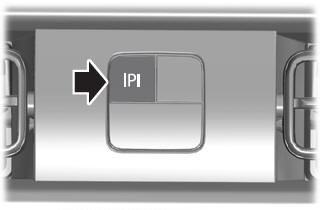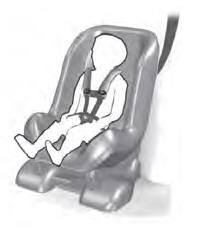Lincoln Aviator: Active Park Assist (If Equipped) / Using Active Park Assist

The parking button is above the transmission selector, just below the display screen.
Press the parking button then touch the Active Park Assist icon on the display screen to bring up full screen notifications. Touch the soft keys on the display screen to switch between Parallel Park In, Perpendicular Park In or Parallel Park Out parking modes.
Driving into a Parking Space
Note: The system detects other vehicles and curbs to find a parking space.
Note: The system does not recognize parking space lines and centers your vehicle between objects.
Note: When parking perpendicularly, the system backs your vehicle into parking spaces.
- Press the active park assist button.
- Touch the active park assist icon on the
touchscreen.
Note: The system searches for parallel parking spaces on the passenger side. Touch the active park assist icon again to make the system search for perpendicular spaces.
- Use the direction indicator lever to search for a parking space on the driver or passenger side of your vehicle.
- Drive your vehicle approximately 3 ft (1 m)
away from and parallel to the other
parked vehicles when searching for a
parking space.
Note: A tone sounds and a message appears in the information display when active park assist finds a suitable parking space.
- Press and hold the brake pedal.
- Release the steering wheel and shift into neutral (N).
- Press and hold the active park assist button.
- Release the brake pedal to allow the
vehicle to park.
Note: When parallel parking between objects, the system parks closer to the object in front of your vehicle to allow easier access to your trunk.
Note: When perpendicular parking, the system aligns the front end of your vehicle with the lane side of the object next to it.
Note: When perpendicular parking, if the system detects only one object, it allows enough distance to open the door on either side.
Note: You can slow down your vehicle at any time by pressing the brake pedal.
Note: When parking is complete the vehicle shifts into park (P).
Leaving a Parking Space
The system assists leaving only parallel parking spaces.
- Press the active park assist button.
- Use the direction indicator lever to choose the direction to leave.
- Press and hold the brake pedal.
- Release the steering wheel and shift into neutral (N).
- Release the parking brake.
- Press and hold the active park assist button.
- Release the brake pedal to allow the vehicle to move.
Note: You can slow down your vehicle at any time by pressing the brake pedal.
Note: After the system drives your vehicle to a position where you can exit the parking space in a forward movement, a message appears instructing you to take full control of your vehicle.
Canceling Active Park Assist
To cancel parking assistance at any time, shift out of neutral (N).
Note: If you turn the steering wheel or open the driver door the parking assistance also cancels.
Pausing Active Park Assist
To pause parking assistance at any time, release the active park assist button.
The vehicle stops moving until you press and hold the active park assist button again.
Note: If you open the passenger or rear doors the parking assistance also pauses.
 Active Park Assist (If Equipped)
Active Park Assist (If Equipped)
WARNING: You must remain in your
vehicle when the system turns on. At all
times, you are responsible for controlling
your vehicle, supervising the system and
intervening, if required...
Other information:
Lincoln Aviator 2020-2025 Owners Manual: Steering
Electric Power Steering WARNING: The electric power steering system has diagnostic checks that continuously monitor the system. If a fault is detected, a message displays in the information display. Stop your vehicle as soon as it is safe to do so...
Lincoln Aviator 2020-2025 Service Manual: Removal and Installation - Rear Bumper
Removal NOTE: Removal steps in this procedure may contain installation details. All vehicles Remove the rear bumper cover. Refer to: Rear Bumper Cover (501-19 Bumpers, Removal and Installation). Vehicles without trailer tow package On both sides...
Categories
- Manuals Home
- Lincoln Aviator Owners Manual
- Lincoln Aviator Service Manual
- Garage Door Opener
- Resetting the System
- Wireless Accessory Charger (If Equipped)
- New on site
- Most important about car
Child Seats

Use a child restraint (sometimes called an infant carrier, convertible seat, or toddler seat) for infants, toddlers and children weighing 40 lb (18 kg) or less (generally four-years-old or younger).
Using Lap and Shoulder Belts
WARNING: Do not place a rearward facing child restraint in front of an active airbag. Failure to follow this instruction could result in personal injury or death.

